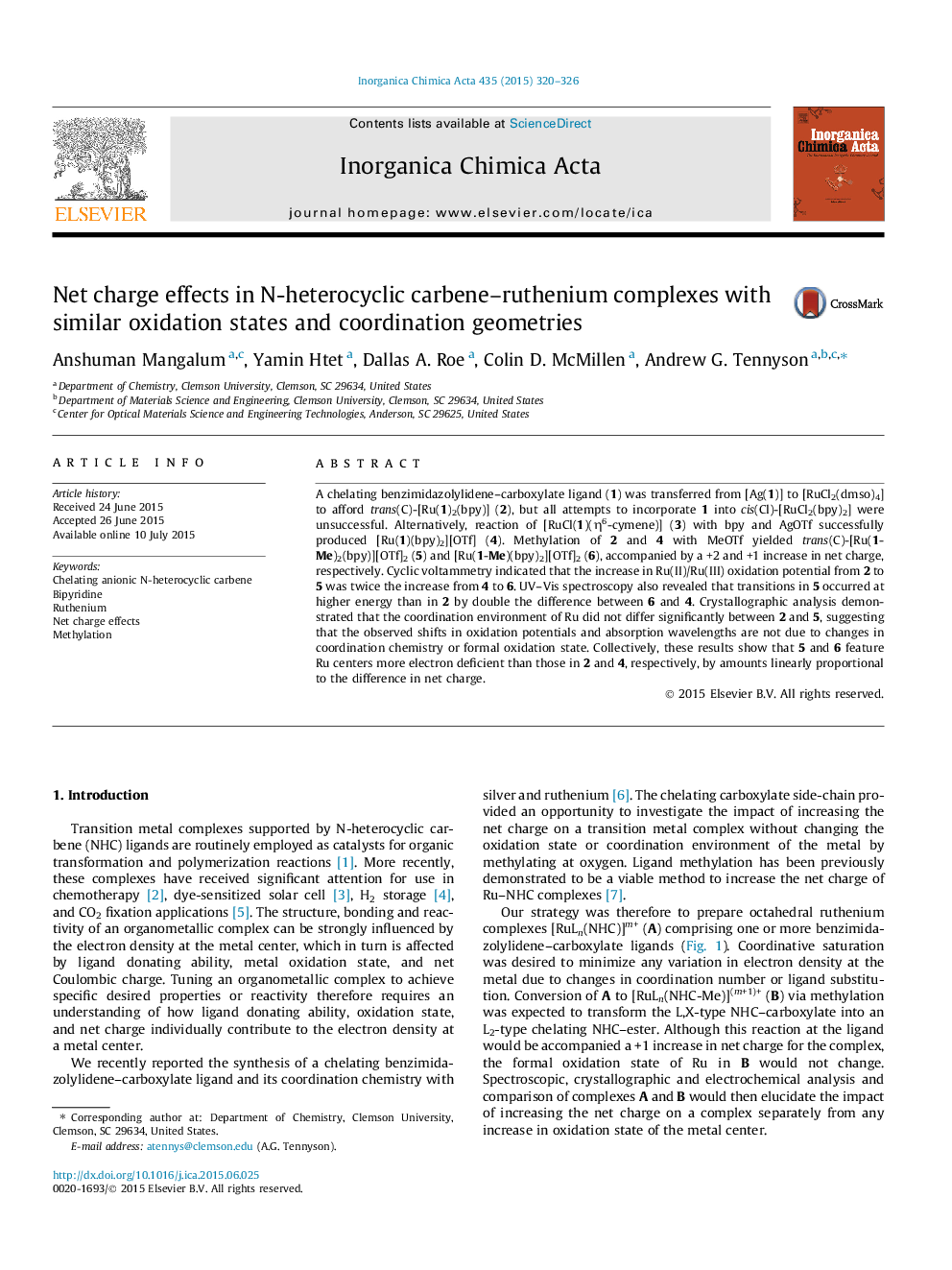| Article ID | Journal | Published Year | Pages | File Type |
|---|---|---|---|---|
| 1308974 | Inorganica Chimica Acta | 2015 | 7 Pages |
•Bipyridyl–Ru complexes with 1 or 2 bidentate NHC–carboxylate ligands were prepared.•NHC ligands were converted from anionic to neutral upon methylation by MeOTf.•Net positive charge was added without significantly altering coordination chemistry.•Ru oxidation potential was raised in linear proportion to net charge increase.
A chelating benzimidazolylidene–carboxylate ligand (1) was transferred from [Ag(1)] to [RuCl2(dmso)4] to afford trans(C)-[Ru(1)2(bpy)] (2), but all attempts to incorporate 1 into cis(Cl)-[RuCl2(bpy)2] were unsuccessful. Alternatively, reaction of [RuCl(1)(η6-cymene)] (3) with bpy and AgOTf successfully produced [Ru(1)(bpy)2][OTf] (4). Methylation of 2 and 4 with MeOTf yielded trans(C)-[Ru(1-Me)2(bpy)][OTf]2 (5) and [Ru(1-Me)(bpy)2][OTf]2 (6), accompanied by a +2 and +1 increase in net charge, respectively. Cyclic voltammetry indicated that the increase in Ru(II)/Ru(III) oxidation potential from 2 to 5 was twice the increase from 4 to 6. UV–Vis spectroscopy also revealed that transitions in 5 occurred at higher energy than in 2 by double the difference between 6 and 4. Crystallographic analysis demonstrated that the coordination environment of Ru did not differ significantly between 2 and 5, suggesting that the observed shifts in oxidation potentials and absorption wavelengths are not due to changes in coordination chemistry or formal oxidation state. Collectively, these results show that 5 and 6 feature Ru centers more electron deficient than those in 2 and 4, respectively, by amounts linearly proportional to the difference in net charge.
Graphical abstractBipyridyl–ruthenium complexes were prepared with one or two chelating benzimidazolylidene–carboxylate ligands, that were converted to methyl esters upon reaction with 1 or 2 equiv. of MeOTf, respectively. Metal oxidation potentials and absorption wavelengths increased in energy linearly with the increase in net charge on the complex.Figure optionsDownload full-size imageDownload as PowerPoint slide
